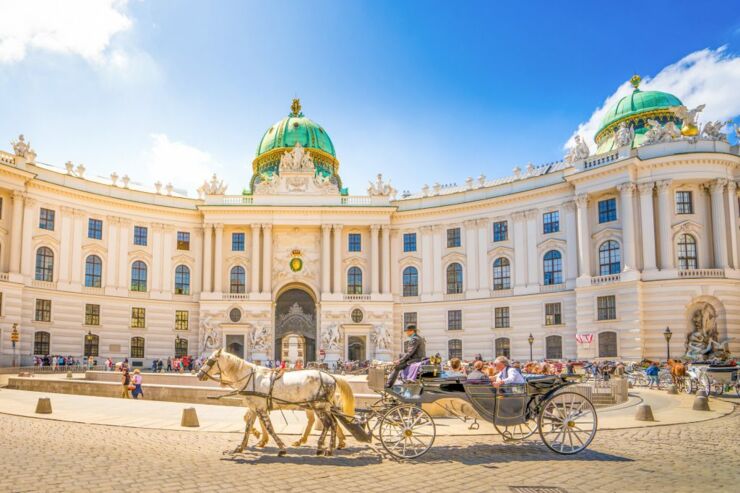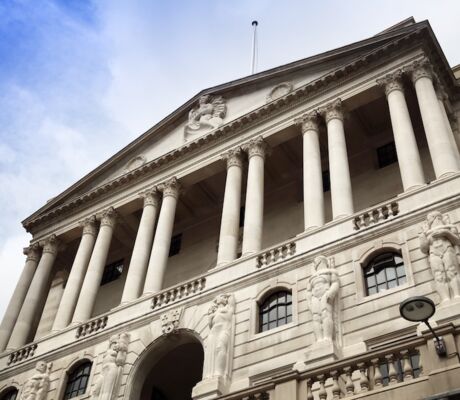Situated in the southern area of central Europe, Austria has a population of around 8.8 million people. The country is dominated by the capital Vienna which has a population of around 1.9 million people. In many ways, Austria has an array of contradictions with a “rustic charm” complemented by a modern infrastructure, good old-fashioned style hospitality and an economy which is certainly moving with the times. Those who have researched Austria will be well aware that the Alps covers more than half of the country creating a huge focus on tourism, skiing and holiday homes. However, there is a lot more to Austria than just snow and skiing!
The last few years have seen huge developments in the Austrian real estate market where restrictions on property ownership were effectively lifted back in 2005. There has increased accessibility for EU buyers although there are still some individual regional restrictions to be aware of. So, what does the future hold for the Austria and the Austrian property/mortgage markets?
Austrian economy
It will come as no surprise to learn that the Austrian economy is dominated by tourism which is part of a vibrant service sector – with significant contributions from industry and agriculture. The Austrian economy is also heavily influenced by exports and as a consequence impacted more than most by the global economy. While it is fair to say that trade disputes involving the USA and various other countries have not helped the world economy, Austria has proven extremely resilient and posted some very impressive economic figures of late.
As you can see from the above chart, with the exception of a brief period between 2013 and 2015, Austria has outperformed the Eurozone and economic growth is now on a par with the USA. Interestingly, the breakdown of GDP growth in the right hand bar chart illustrates the growing influence of net exports, private consumption and investments compared to public consumption. Economic growth hit 2.7% in 2018 although this is expected to fall to around 1.4% when the figures for 2019 are released.
Looking to the future, economic growth is expected to dip again in 2020 to 1.3% which although disappointing compares favourably with expectations of just 1% for the Eurozone in 2019 and 2020. The rate of unemployment in Austria has been falling steadily since 2017 when it hit 8.5% falling to 7.7% in 2018, 7.4% in 2019 and expected to remain stable at 7.4% in 2020. The short to medium term trend in unemployment numbers will depend to a significant extent on the re-coupling of global trade with ongoing disputes and Brexit impacting not only sentiment but also actual trade.
Inflation, which hit 2.1% in 2017, should bottom out in 2019 at around 1.7% before rising to 1.9% in 2020. We have also included a chart highlighting “Taylor’s rule” which relates to the optimal base rate of a country (in this example the Eurozone) based purely on economic performance. This shows that the ECB rate, currently 0%, is extremely loose and is effectively being used to prop up the Eurozone as a whole.
It is safe to say that 2018 was the strongest year of economic growth in Austria since the depths of the worldwide financial recession back in 2011. The country also returned its first budget surplus since 1973 with public debt as a percentage of GDP expected to fall below 70%. The budget surplus of 0.1% in 2018 is expected to widen to 0.5% in 2019 then consolidate at 0.2% in 2020. A mixture of relatively strong global trade, heavy investment in Austria and the strongest levels of domestic consumption for a decade all came together to create perfect economic conditions.
Austrian property market
In reality, if Austria was a stand-alone country as opposed to part of the European Union base rates would be significantly higher than the current ECB rate of 0%. As a consequence, relatively cheap finance has helped to fund property investment with record levels of overseas investment. As you can see from the graphs below, real estate prices in Austria have doubled since the turn-of-the-century. When you take into account annual net income has only increased by circa 40% over the same period it is safe to say that real estate affordability for the average Austrian is now being stretched. Part of this is as a consequence of foreign investors willing to accept lower headline rental yields which are actually relatively high compared to current base rates.
As you will see from the graph below, the growth in the Austrian population has been increasing towards the top end of the range of the last 60 years. So, greater natural demand for real estate, increased foreign investment and a strong economy accommodating a growing workforce have all led to an increase in Austrian property prices. While the luxury end of the market has remained fairly buoyant, the ever challenging affordability factor for the general market will become more of an issue in the short to medium term.
The growing investment in Austrian real estate is perfectly illustrated by the following graph which shows a huge increase in investment from 2010. As you will see, the main areas attracting investment have been office, residential and hotel real estate. This reflects the growing dependence on the services sector with particular emphasis on tourism. The buoyant economy, and interest from overseas investors, has seen a significant increase in residential real estate investment. While there are local restrictions on overseas property ownership, since adopting the euro and joining the European Union these restrictions are far less onerous than they have been in years gone by.
While the services industry, dominated by tourism, will always be the main driver for the Austrian economy, there has been heavy investment in e-commerce and online retail. Many experts believe we will see significant investment in retail storage facilities, a trend which has already enveloped other areas of Europe and the wider global economy.
Austrian residential property
Historically many governments around the world have failed to appreciate the relationship between new build numbers, oversupply and undersupply. Fortunately, this does not seem to be an issue with the Austrian authorities with new dwelling numbers falling by 13.7% in 2018 and expected to record a further drop in 2019. While there are obviously many other factors to consider, an oversupply of newbuilds when the market turns would exacerbate a fall in prices. Therefore, it is reassuring to learn that overall the government seems to be monitoring the situation and being proactive rather than reactive.
The following charts show the significant rise in real estate investment and number of units sold per annum over the last decade. The overall total investment in real estate has increased at a far greater rate than the number of housing transactions which reflects the growing cost of real estate in Austria.
We now have an interesting graph which highlights the breakdown of property price growth between existing dwellings and new dwellings since 2010. Since 2015 the rate of property price growth in new dwellings has lagged that of existing dwellings. As the number of permits for new developments is falling we may well see a relative boost in the value of new dwellings with limited supply and still growing demand.
As a precursor to the following section on Vienna property, this graph perfectly illustrates the differential in prices and demand. Austrian property prices excluding Vienna have doubled since the turn-of-the-century. The price of real estate in Vienna has increased by 150% over the same period which is a huge relative outperformance.
The above graph highlights the general positive trend in Austrian real estate in recent times but as we mentioned above this is a country dominated by Vienna. So, we will now take a look at the Vienna property market and see how this has performed in recent times and prospects for the future.
Vienna property market
On the whole investment in Austrian real estate is split 60/40 in favour of domestic buyers over foreign investors. It will come as no surprise to learn that this market attracts particular interest from Eastern Europeans such as Russian and Ukraine investors. In many ways Austria offers a similar culture for Eastern European investors while accommodating the latest in freedom and rights. The situation is a little different when it comes to Vienna which accounts for circa 20% of the overall population (1.8 million).
Research shows that the “super prime” real estate areas of Vienna attract a more diverse group of foreign investors. We have seen prominent investment from Switzerland, the USA, Hong Kong, Middle East as well as Eastern Europe and the wider European Union. It will also come as no surprise to learn that Vienna was ranked as the best city to live in (for the 10th year running) according to the 21st Mercer Quality of Life study 2019.
This graph shows the number of dwellings in Austria from 1951 up to 2011 on a decade by decade basis. The highest rate of growth has come from lower Austria and upper Austria and while Vienna has shown some growth in numbers, it is not exceptional. Those who follow luxury property markets around the world will be well aware that limited newbuilds are a very prominent characteristic of these markets. This helps to nurture demand which pushes prices higher thereby creating an aura around luxury property such as those in and around Vienna.
Interestingly, 80% of flats built in Vienna are financed by the city’s housing subsidy scheme with around two thirds of Viennese citizens living in municipal/publicly subsidised housing. While the luxury end of the Vienna property market will be protected from a planned 30% percent increase in housing construction, this will certainly create more demand for the region. In the short to medium term the authorities have given permission for 13,000 new homes to be built each year which is a marked increase on the current 10,000 level.
What makes Vienna luxury real estate so special?
There are many factors to take into consideration when it comes to the luxury end of the Vienna real estate market. The culture, the history and the fact that those living in the inner sanctum of Vienna can turn one way to a night at the opera, another to a historic museum and walk forward for a retail experience taking in all of the top worldwide brand names. That region is Innere Stadt where prices can vary from €15,000 per square metre for a newly constructed apartment to a staggering €35,000 per square metre for a luxury penthouse. The average asking price in this area starts at around €1 million but can very quickly ramp up into the tens of millions of euros for large-scale developments and “entire palaces”.
It is common for luxury apartments to have their own concierge services, rooftops terraces, wine cellars, private lifts and exclusive parking facilities. It is common knowledge that many existing properties are being split into “open plan” apartments to squeeze as many apartments into a property as possible. In a sign of the times, many property developments in Vienna have large atriums where horse-drawn carriages once turned in years gone by. In many ways, this is a perfect reflection of why the Vienna luxury property market is so sought after.
The latest trend includes the acquisition of “not yet renovated” apartments which brings a little history back to Vienna. It is also worth noting that the Vienna authorities are very keen to protect the culture and the history of the area and renovations are monitored extremely closely.
Some of the other issues to consider when looking at the luxury property in Vienna include:-
- Rented households account for 75% of homes in Vienna against just over 40% for Austria as a whole
• Luxury Vienna properties attract relatively low rental yields with the majority owner occupied by high net worth individuals
• Many Austrian nationals have been priced out of the luxury Vienna property market as a consequence of price rises and lower income growth
The life style, standard of living and services in the luxury property regions of Vienna are attracting more and more domestic and international investors. Austria on the whole has a lot to offer and Vienna, especially the inner sanctum, offers the crème de la crème of luxury real estate.
Austrian mortgage market
In general terms the Austrian mortgage market is relatively small compared to the European average. The mortgage market made up 29.5% of GDP in 2019 which while up from 17.1% in 2003 is still well below the EU average of 50%. According to the European Central Bank, outstanding Austrian mortgages as of October 2019 stood at around €117.5 billion which was up 5.4% on the previous 12 months.
Historically Swiss franc funded mortgages have been relatively popular in Vienna (accounting for 97% of foreign currency denominated loans) but the percentage of foreign currency denominated mortgages has fallen from 18.8% in 2016 to just 12.3% in 2018. While there is a degree of stability when it comes to the Swiss franc, it is worth reminding ourselves that the current ECB base rate is 0%. This has created a wave of cheap finance which is unlikely to diminish for the foreseeable future.
Foreign nationals buying property in Austria
The Austrian real estate market has relatively few headline restrictions for overseas investors although there are some local restrictions which will need to be respected. As the country uses the euro this means there is huge mortgage funding available for both domestic and foreign buyers with particularly strong competition in the Vienna luxury property market.
Even though Vienna has been voted the best city in the world in which to live for the last 10 years the cost of living in Vienna is nowhere near that of for example London. Therefore, mortgage funding is readily available at extremely competitive rates. There is also the opportunity to utilise overseas income and additional assets to induce enhanced rates.
Conclusion
Austria has a population of circa 9 million, similar to that of London, and offers a stable environment, strong economy and history which few other countries can match. The economy has been relatively strong of late even if the next couple of years will see a reduction in growth rates. Much of the economy is focused around the services industry, predominately tourism, although there is also a very strong export industry. The expected reduction in economic growth rates over the next couple of years is a reflection of the difficult global trading environment where protectionism and fallout seem commonplace today.
The luxury property market in Vienna offers everything on your doorstep and the opportunity to live in an “old world” environment. The current trend is to acquire apartments which have yet to be refurbished and still reflect the trends and fashions of years gone by. Many of the historic restrictions on overseas property investment were lifted in 2005 as a consequence of earlier membership of the European Union. While Eastern Europeans are strong supporters of the Austrian real estate market, the attractions of the Vienna luxury property market have resulted in a greater worldwide appeal.
There continues to be an acute shortage of new build properties, strong demand for luxury properties in and around Vienna and confidence in the Austrian economy. As a consequence, many experts believe that the Austrian property market still offers potential for long-term capital growth.
References:
www.bankaustria.at/en/markets-research-austrian-economy.jsp
www.cbre.co.uk/research-and-reports/Austria-Real-Estate-Market-Outlook-20200
www.globalpropertyguide.com/Europe/Austria/Price-History
www.mansionglobal.com/articles/in-vienna-the-inner-city-is-the-home-of-luxury-106170





